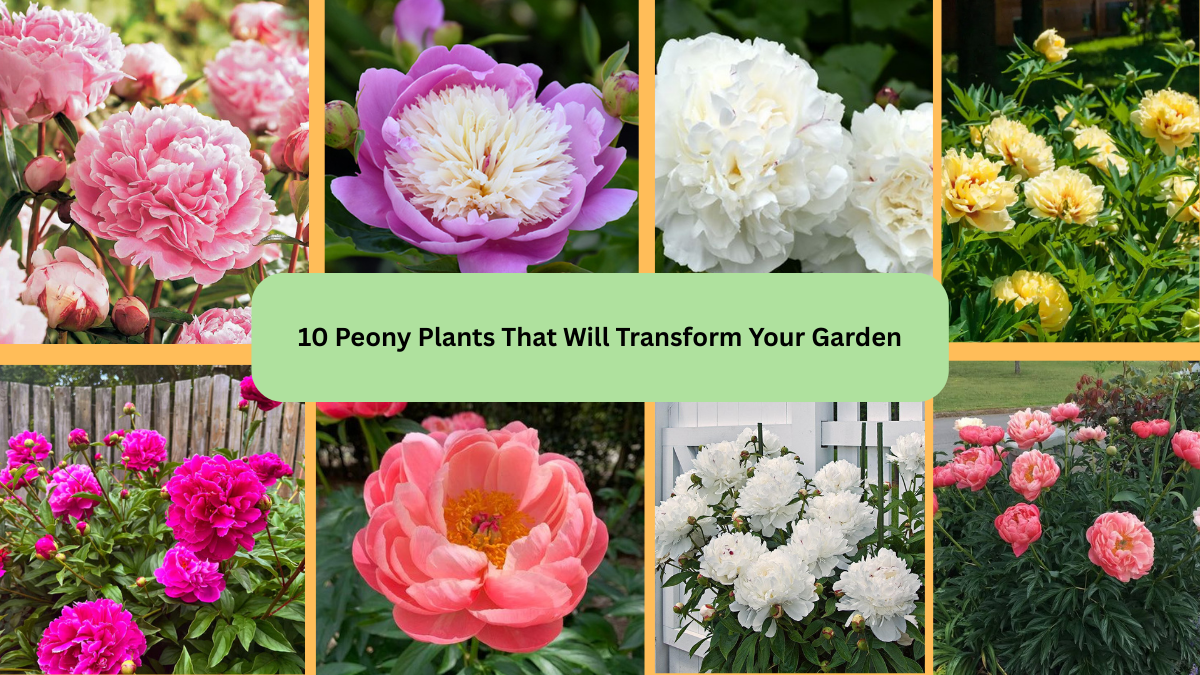Few flowers rival the lush beauty, fragrance, and timeless elegance of peonies. These perennial favorites are adored by gardeners and floral designers alike for their large, billowy blooms and romantic appeal. Available in an array of colors and forms from classic double blossoms to delicate single petals peonies can transform any garden into a breathtaking, flower-filled paradise. Whether you prefer soft pastels or bold, vibrant hues, there’s a peony to suit every style. Here are 10 peony plants that will instantly elevate your garden’s charm.
1. Sarah Bernhardt Peony

One of the most beloved and widely grown peonies, Sarah Bernhardt dazzles with its soft pink, fully double blooms. Flowering in late spring to early summer, its massive, ruffled petals emit a sweet, classic fragrance. This heirloom variety has remained a garden favorite for over a century, thanks to its reliable performance and irresistible charm. It thrives in full sun to partial shade and well-drained soil. Perfect for borders and cut flower arrangements, Sarah Bernhardt brings a touch of old-world romance to any space.
2. Bowl of Beauty Peony
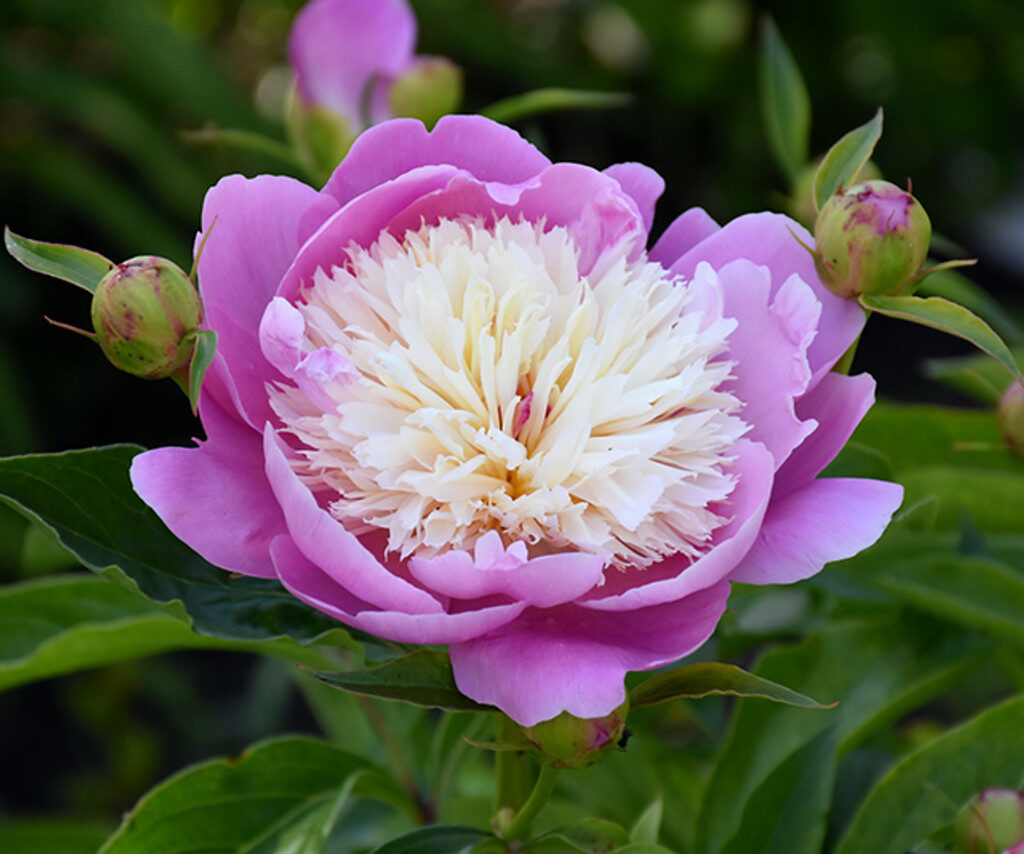
Bowl of Beauty lives up to its name with spectacular, eye-catching blooms. Featuring large, single, bright pink outer petals that surround a frilly, pale-yellow center, this Japanese-type peony creates a dramatic display in late spring. It’s cherished not just for its beauty but also for its light, pleasant fragrance. The plant grows well in full sun and requires rich, well-drained soil. Excellent as a focal point in mixed flower beds, it’s also a favorite for cutting gardens due to its striking appearance.
3. Karl Rosenfield Peony

A classic among red peonies, Karl Rosenfield boasts deep crimson, double blooms that command attention. Its large, velvety petals create a luxurious texture, making it a top pick for gardeners seeking bold, vibrant color. Blooming in late spring to early summer, it performs best in full sun with moist, fertile soil. The flowers are wonderfully fragrant and make stunning cut arrangements. Hardy and long-lived, this variety adds richness and depth to perennial borders, cottage gardens, and formal garden designs.
4. Coral Charm Peony
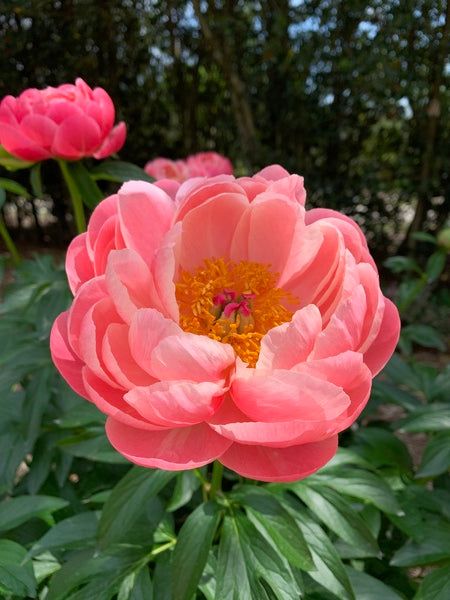
Coral Charm is prized for its unique, sunset-hued blooms that shift from deep coral-pink to soft peach as they mature. One of the earliest peonies to bloom in spring, it offers semi-double flowers with golden centers that attract pollinators. This variety grows best in full sun and well-drained, slightly acidic soil. With strong stems and large, upward-facing blossoms, it makes an excellent choice for flower beds and vases alike. Its vibrant color and contemporary feel make it a standout in any garden.
5. Festiva Maxima Peony
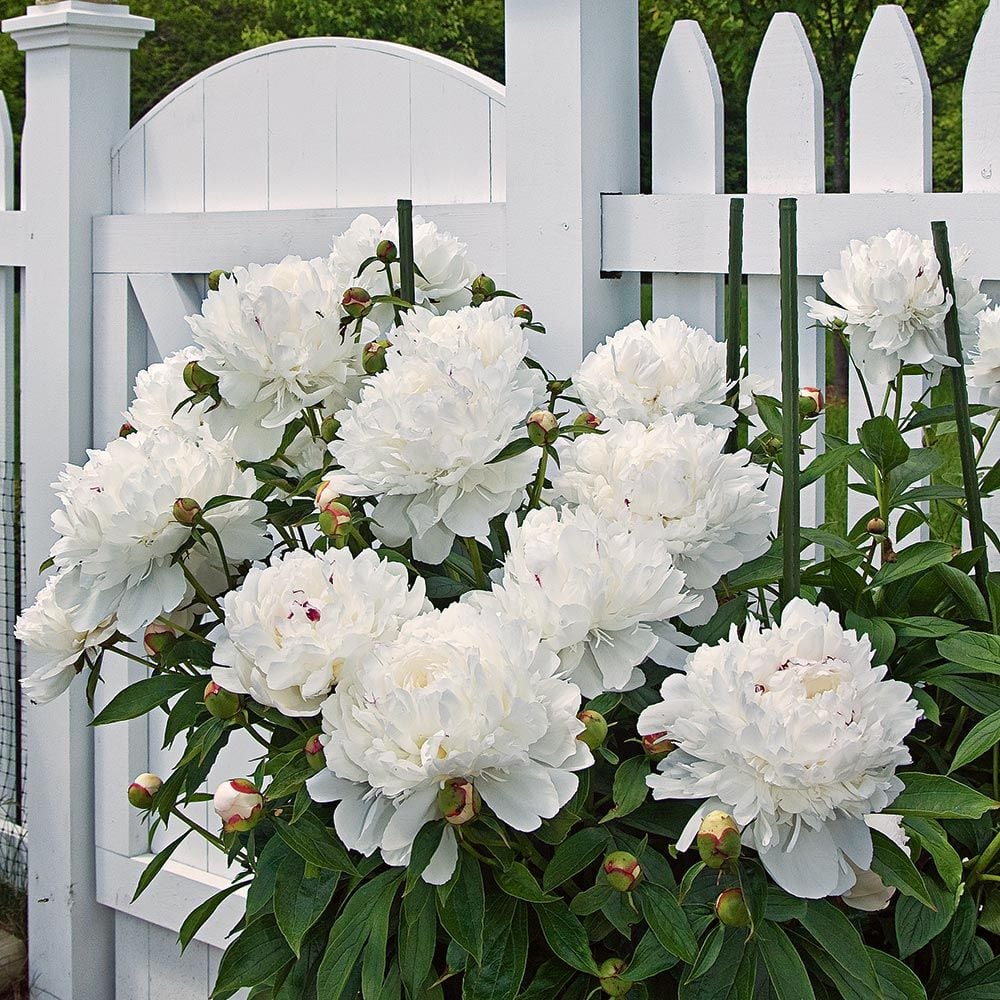
Renowned for its large, pure white double blooms, Festiva Maxima adds elegance and brightness to any landscape. The flowers feature occasional crimson flecks at their centers, giving them a touch of playful character. Blooming in mid to late spring, this heirloom variety fills the air with a sweet, fresh fragrance. It thrives in full sun and rich, well-drained soil. As one of the oldest peony cultivars still in popularity, Festiva Maxima is perfect for creating classic white gardens or sophisticated cut flower arrangements.
6. Duchesse de Nemours Peony
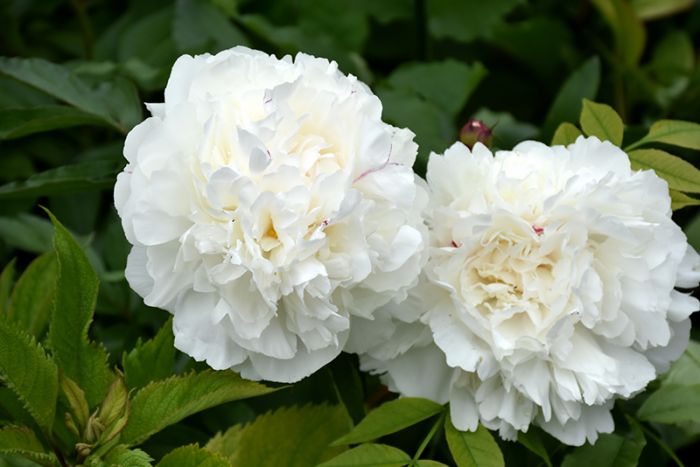
A favorite among white peonies, Duchesse de Nemours boasts creamy-white, double blooms with a delightful lemony fragrance. Its softly rounded petals and lush form evoke timeless beauty and grace. Blooming in late spring to early summer, this French heirloom variety thrives in full sun and moist, fertile soil. It’s particularly well-suited to classic cottage gardens and elegant landscape borders. Known for its exceptional vase life, Duchesse de Nemours is also a top pick for bridal bouquets and romantic floral displays.
7. Shirley Temple Peony
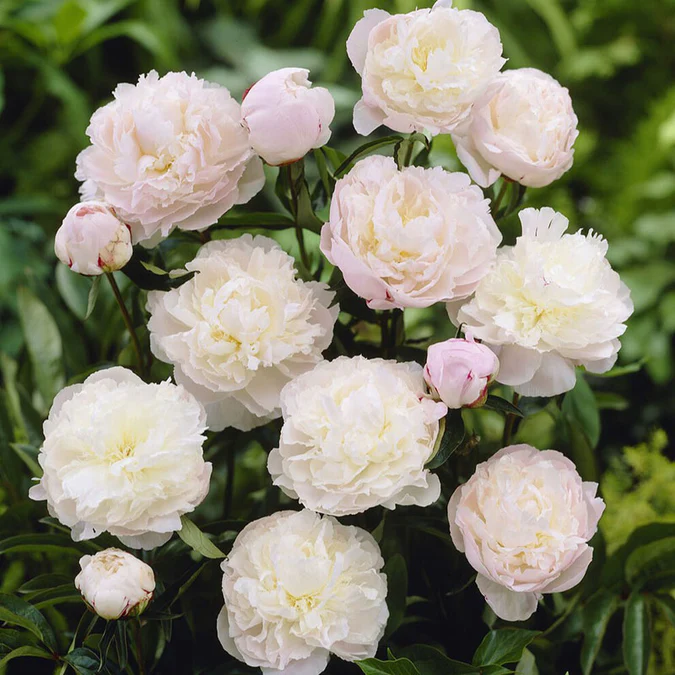
Named after the iconic child actress, Shirley Temple enchants with its delicate, blush-pink double blooms that gradually fade to creamy white. Blooming in late spring, its large, fluffy flowers emit a light, pleasant fragrance. This variety grows best in full sun and rich, well-drained soil. Its soft, pastel hues make it perfect for romantic, vintage-inspired gardens and flower borders. Hardy and long-lasting, Shirley Temple pairs beautifully with roses, irises, and delphiniums, offering years of dependable beauty with minimal care.
8. Bartzella Peony
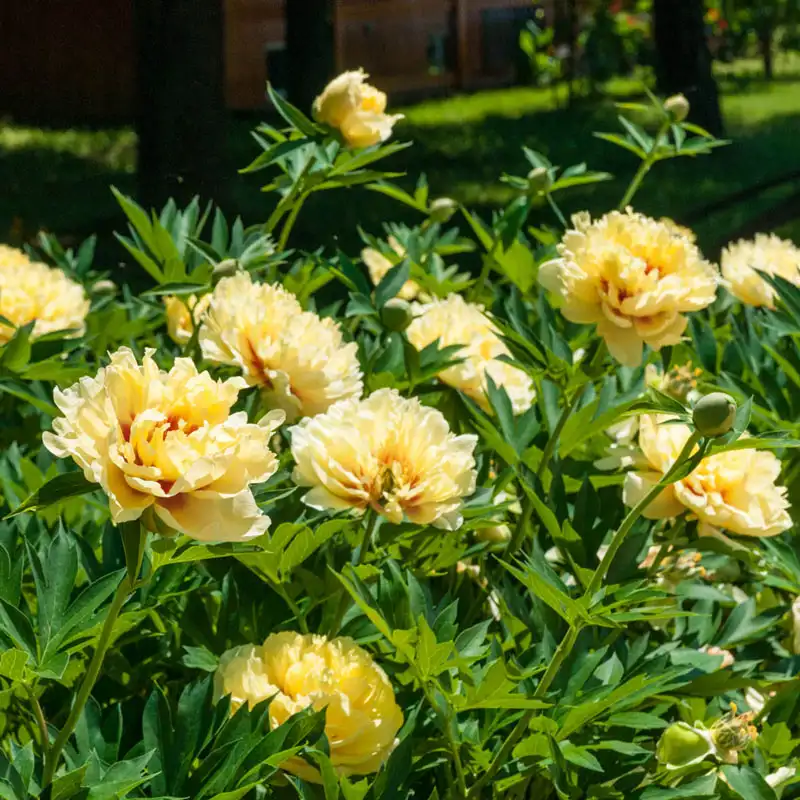
A standout among intersectional (Itoh) peonies, Bartzella delivers massive, lemon-yellow semi-double blooms with soft, ruffled edges and a sweet fragrance. Blooming from late spring to early summer, this vigorous variety thrives in full sun and well-drained soil. Its strong stems hold the large blossoms upright, making it an ideal feature plant in garden beds. Bartzella combines the best traits of herbaceous and tree peonies — offering hardiness, abundant blooms, and gorgeous foliage. Its cheerful color brightens borders and makes stunning bouquets.
9. Coral Sunset Peony
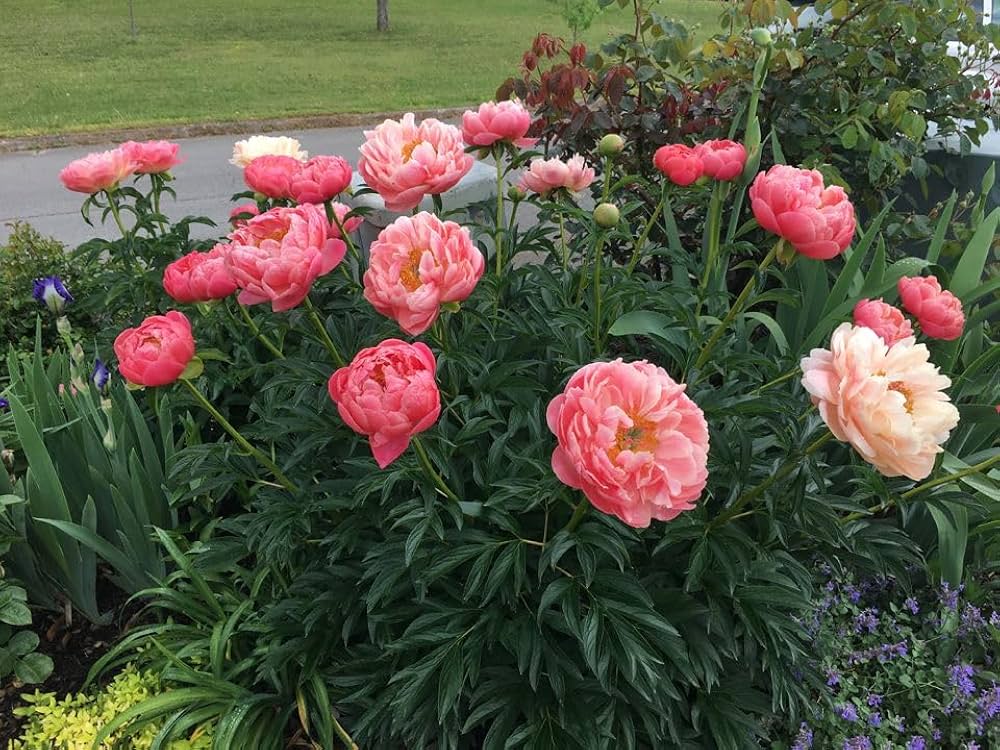
Coral Sunset is another dazzling peony known for its semi-double flowers that open in a rich coral hue and fade to apricot and ivory as they age. Its large, bowl-shaped blossoms appear in late spring, accompanied by a mild, fresh scent. This variety grows best in sunny locations with fertile, well-drained soil. With sturdy stems and unique coloring, Coral Sunset adds warmth and dimension to both formal and casual garden designs. It also shines in cut flower arrangements with its ever-changing color palette.
10. Paeonia suffruticosa (Tree Peony)
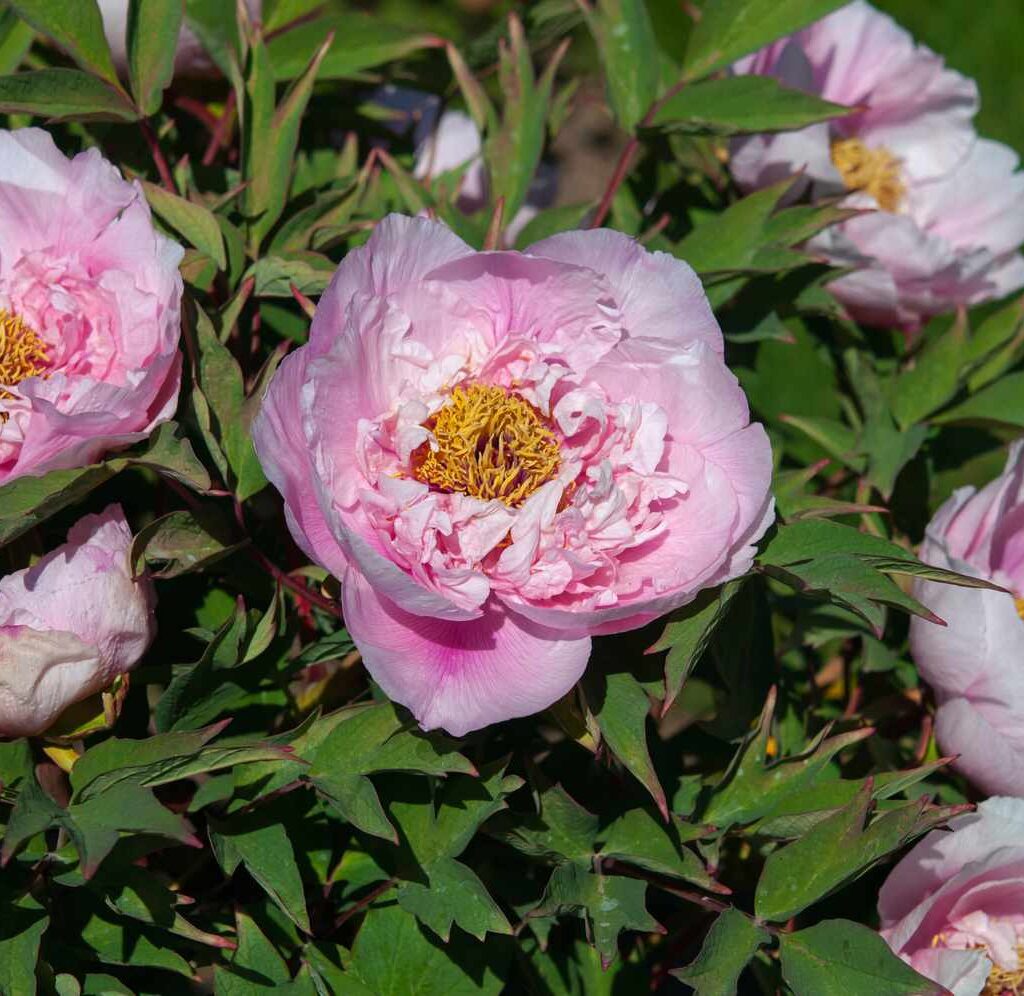
Distinct from herbaceous varieties, Tree Peonies like Paeonia suffruticosa offer large, showy blooms on woody stems that remain above ground year-round. These elegant shrubs bloom in mid to late spring with flowers in a wide range of colors from soft pastels to rich reds and purples. Thriving in full sun to light shade and well-drained soil, tree peonies are known for their impressive longevity and can live for decades with minimal care. Their luxurious blooms and sculptural form make them ideal statement pieces in refined garden designs.
